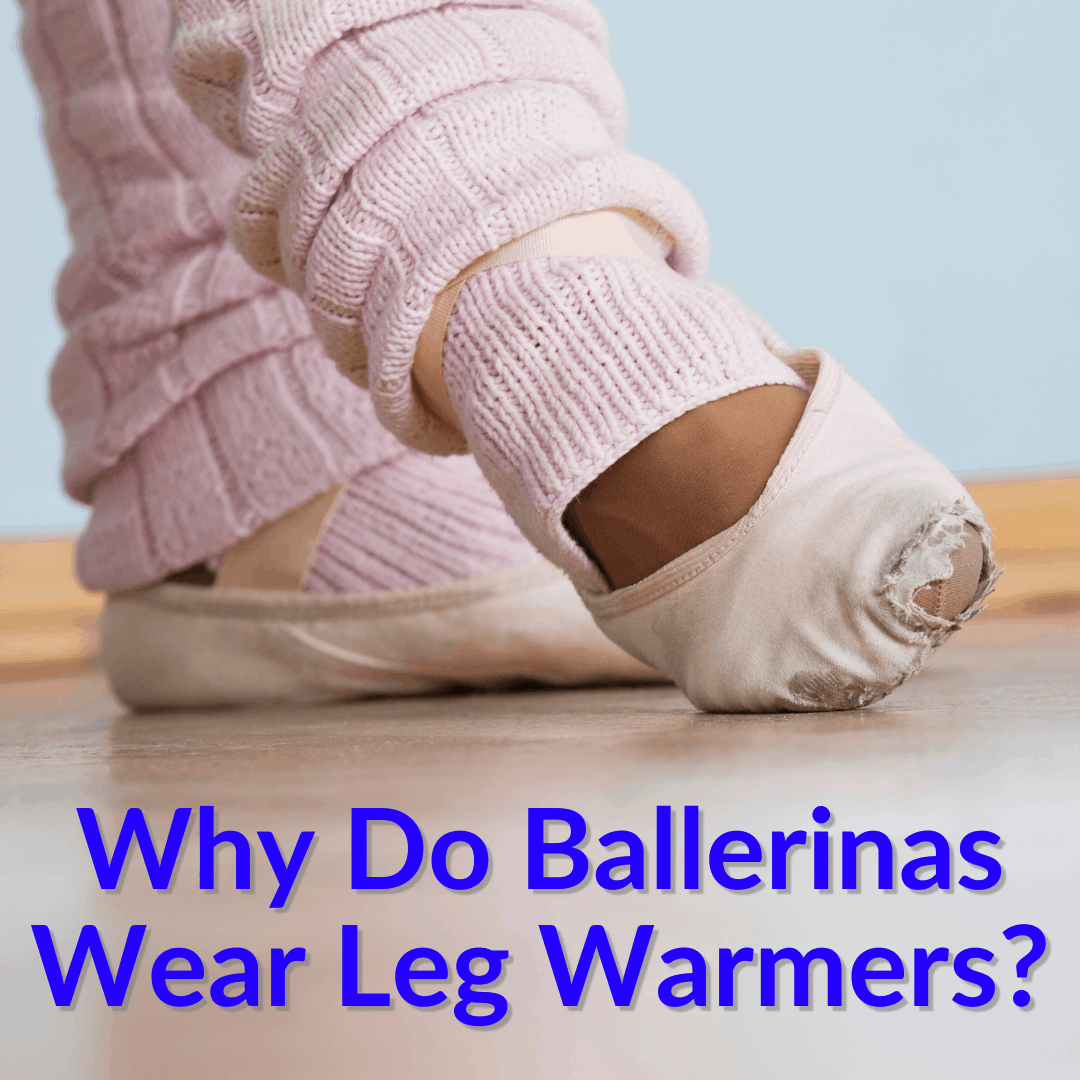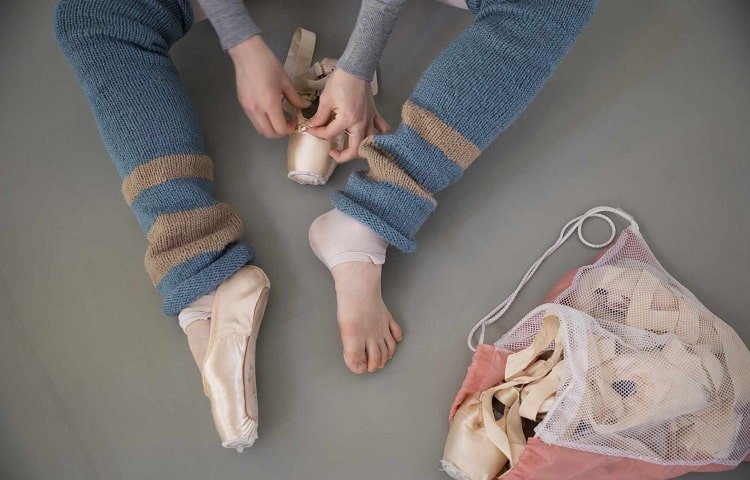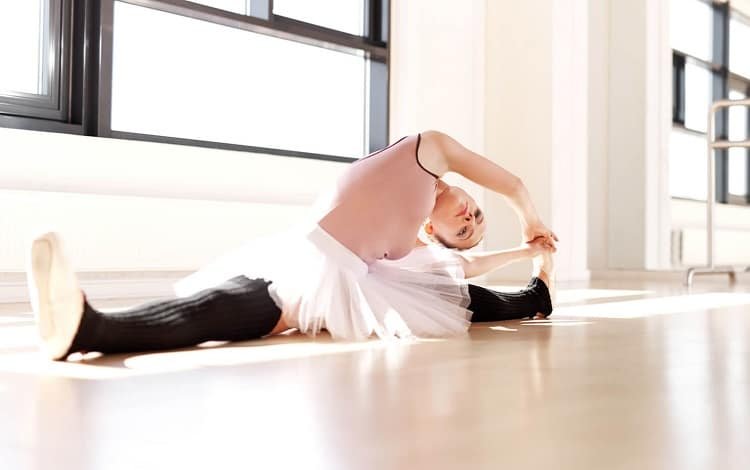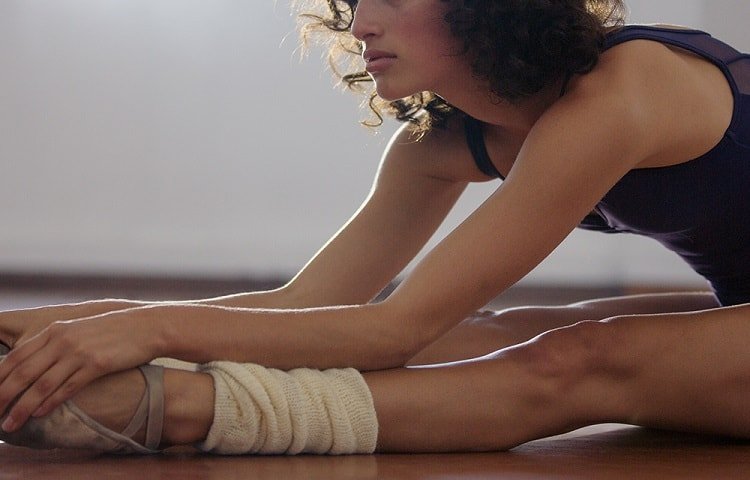 Back in the 1980s, it made sense.
Back in the 1980s, it made sense.
Leg warmers were considered fashionable, so why not wear them?
But these days, they’re usually a punch line about bad fashion sense.
So why do ballerinas still wear leg warmers?
It turns out they are a vital part of a ballerina’s workout outfit.
Sure, they keep the legs warm. But in doing so, they also provide a much more important benefit.
Not unlike wearing tights over a leotard, which is also a common punchline. Let’s take a look at the benefits of leg warmers.
Table of Contents
Why Do Ballerinas Wear Leg Warmers?
Leg warmers are basically the cheapest, easiest investment that ballerinas can possibly make.
As you can imagine, most of the weight that ballerinas bear goes onto their legs and calves. When they bend into their dance moves, that weight still comes down on those legs. It’s just distributed differently.
When they stand on their tiptoes during all of this, their legs are bearing an even heftier load. Do you see a pattern here?
Their legs are the center of everything they do. This means that one leg injury could spell the end of a career, one that may have been fifteen years in the making (or more).

You’ll see ballerinas during practice with leg warmers that go from very close to their ankles, all the way up to their knees, and sometimes halfway up their thighs.
What’s the reason behind this?
Warmth. Your calf contains muscles like the gastrocnemius and the soleus, both of which are very important muscles that support your entire body.
The gastrocnemius is the largest calf muscle of all. It’s so large that when you flex your calf, you can see it move and bulge beneath the skin.
The soleus is the smaller muscle, which rests directly underneath the gastrocnemius muscle. This helps connect your large calf muscles to the bone without being disruptive.
If one of those two muscles tear, it could be months before you’re back on your feet, and the ballet game doesn’t wait on you.
Leg injuries can be attributed to extreme force or tension in the leg, which means there is a lack of blood flow, oxygen delivery, and too much lactic acid surrounding the muscle.
Warmth is the key. Muscles relax through warmth.
Proper levels of heat expand the blood vessels to allow more blood to flow. This means more oxygen delivery to your muscles, and more lactic acid to be carried away, leaving your legs as strong as possible.
Leg warmers are the easiest way to do this for ballerinas, especially because they’re a hardy bunch that train through the winter, and commonly for multiple hours per day.
It would be exhausting to warm up your legs manually every ten to fifteen minutes.
And because of their leotards and tights, there’s not a lot of heat retention in their uniforms. Leg warmers help make up for that.
Ballet Leg Injuries

The number of injuries that can occur during ballet practice is far larger than most people think. There are also a number of long-term body injuries that are common among dancers.
Fractures, sprains, and skin issues are all common. Here are a few of the main leg injuries you can expect.
Sprained Ankles
All it takes is one wrong landing to sprain an ankle. It’s not as bad as a full break, but the sprain can carry beyond the ankle and send shooting pain up the calf.
Muscle Tears
Your muscles are attached to the outside of your bones. The fibers pull on your bones to move you, and when a muscle tears, it cripples your ability to move. Muscle tears are extremely detrimental to a dancer’s career.
Achilles Tendonitis
Your achilles tendon, located in your foot, can be injured very easily. The problem here is that the pain can spread up the leg if you make more movements on your foot, even by mistake.
Stress Fractures
Small hairline fractures can occur on your leg bones (as well as your foot and toe bones), causing light pinches of pain that feel like shin splints. Undiagnosed, these can lead to full-blown hairline fractures and breaks.
Dancer’s Heel
Dancer’s heel is a result of improper posture and tension in your leg. It affects the rear of your ankle. It can be caused by leg sprains, since they force you to put additional weight on your heels. In other words, this injury is usually caused by other leg injuries, rather than being a leg injury on its own.
Your leg muscles and bones can endure a lot of torture from something as athletically demanding as ballet. The above are just a handful of potential problems that ballerinas face with their legs.
Do Leg Warmers Really Prevent Injuries?

Yes, they absolutely can help to prevent injuries. They’re not magic, but they offer light levels of compression (which keeps the blood flow going) as well as enough warmth to keep blood vessels widened.
Apart from keeping blood flowing, leg warmers are also excellent for keeping their muscles in place (see again: compression). During practice, this helps with warm-up phases as well.
If you notice, ballerinas usually do not wear leg warmers for full shows. The reason behind this is two-fold.
- Ballerinas need to be presentable, and leg warmers are unsightly to many people. They’re rarely part of a show’s costume, so they have to stay behind.
- The spotlights on stage are hot. They’re not warm, they’re extremely hot. They provide ballerinas plenty of warmth to help them maintain excellent blood flow. Ballerinas also practice right before a show to warm up, which helps with blood flow, too.
Why Ballerinas Wear Leg Warmers: Conclusion
Injuries happen far too often in ballet. And when you’re a ballerina, one injury could signal the end of a career. A career you’ve been cultivating for years.
But you can use leg warmers during practice sessions, to protect yourself from serious injuries. They work by keeping your legs warm, which increases blood flow. Increases blood flow reduces the chance of injuries.
And leg warmers don’t inhibit your movement, which is vital for a dancer. Whether you practice in a cold studio, or in your warm apartment on a compact and easily moveable ballet barre, leg warmers just make sense.
Leave a Reply